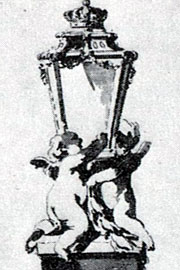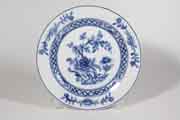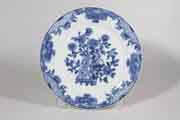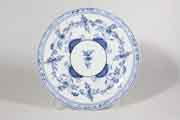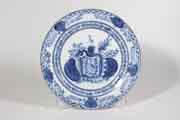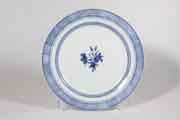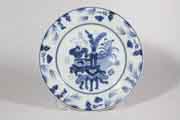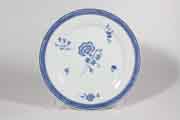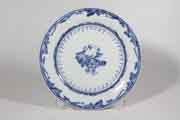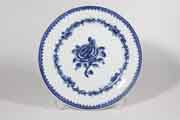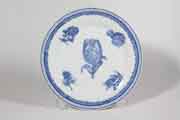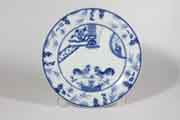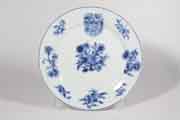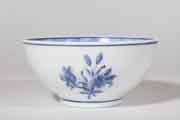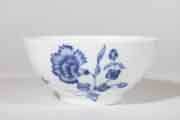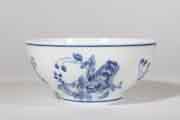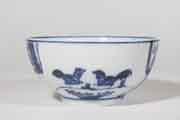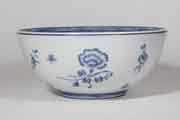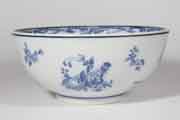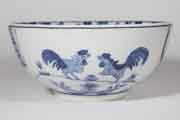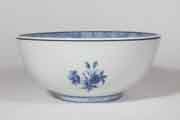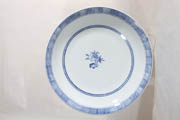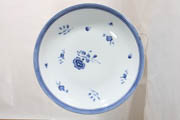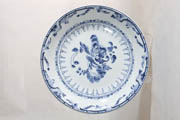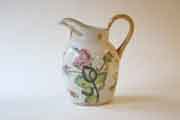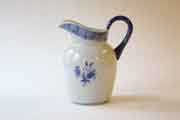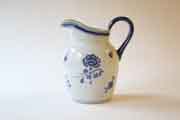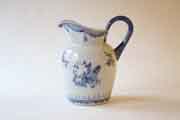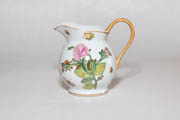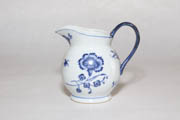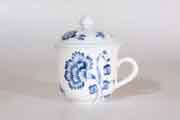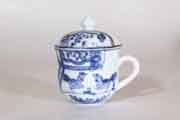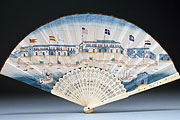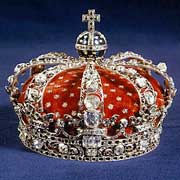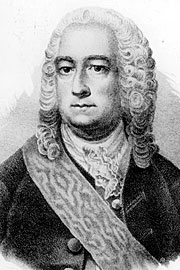
East Indian Porcelain
The Swedish East India Company was founded in 1731, och traded with East Asia but mainly with China. In the beginning it was an extremely profitable business, some years reaching almost 400% profit. However in the beginning of the 19th century, business declined sharply and the company folded. Both founders Niclas Sahlgren and Colin Campbell became extremly rich men, and their home port of Gothenborg flourished during the latter part of the 18th century. The company enjoyed Royal privileges such as sole agency and tax benefits which furthered the profitibility of the company.
The company imported tea, silk, porcelain and spices, which took an average of a year to deliver.
The cargo was then auctioned off in Gothenburg and redistributed throughout Europe. All in all 132 trips to East Asia were undertaken before the company closed its doors in 1813.

One of our most poular designs, “Campbell”, is named after one of the company founders. The pattern portrays “the 100 antiquities” a popular and symbolic pattern in the 18th century China.
“Götheborg”
The East India Ship “Göteborg” sank on the 12 of September, 1745 only 900 meters from its home port in Sweden. The ship had been gone for 30 months on its tour to Canton, China to buy tea, silk, spices and porcelain. Before the ship sank completely, the majority of its cargo was saved and later auctioned off in Göteborg.
The remaining cargo has been salvaged at different points in time, and Simply Scandinavia had been inspired by the patterns of these precious remains, such as “Göteborg”, “Tupp” and “Campbell”.
Canton
In 1684 the Chinese Emperor allowed foreign trade with China.
Canton was the only place foreigners were allowed to live and work.
13 different nations established “factories” which were built alongside each other on the Pearl River. The Swedish factory lies between the American and the English. The first floor was where silk, tea, spices and porcelain were stored and the second floor housed the foreign merchants. None of these factories remain today, but Chinese porcelain is still shipped out from the same harbor.
Export porcelain
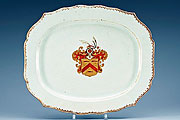
Export porcelain is European patterns and shapes which the East Indian companies ordered in China after Western designs, meticulously copied by the Chinese craftsmen. Every family of means ordered their own services, sometimes several.
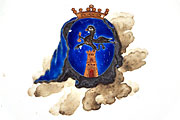
A Famous Mistake
In the 1750s Frederik Gyllenborg, a Swedish Count, commissioned a service from China with his family coat of arms. The watercolor that was to serve as a pattern for the service was water damaged during its voyage to China, and when the service was finished the waterstains had also been meticulously reproduced. Today parts of this dinner service are in very high demand, commanding extemely high prices at the auction houses.
Jean-Eric Rehn
Jean-Eric Rehn was Sweden’s most celebrated designer in the 18th century. Designs for textiles, silver, porcelain, furniture, jewels and interiors were among his many talents. He was educated in Paris and Rome, and supplied the royal houshold and nobility with the latest trends from the European continent.
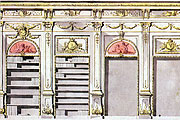 Rehn was also an Art teacher to the future King Gustav III and his brothers. One of his most famous designs was the so called “Rehnska mönstret” that is found in our collection.
Rehn was also an Art teacher to the future King Gustav III and his brothers. One of his most famous designs was the so called “Rehnska mönstret” that is found in our collection.
